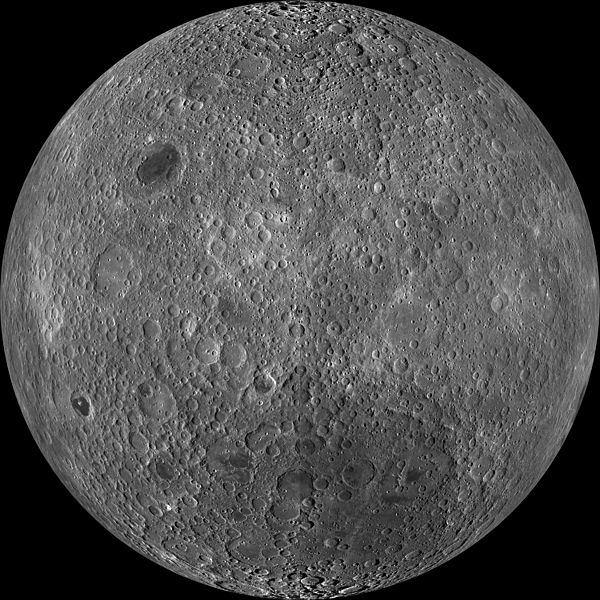Other than the Sun, the Moon is the most obvious celestial object in the sky. It's mentioned in every human culture since record-keeping began. We've dreamt about it, wrote songs and poetry about it, and eventually got to visit there.
The Moon is the only solar system body humans have visited. If I was an astronaut with an opportunity to walk on the surface of the Moon, I think I'd be most useless, as I'd go all fangirly and rolling in the lunar regolith. Yes, I am a prime candidate for space tourism.
We know lots about the Moon simply due to proximity. We can see it with the naked eye, which makes studying it so much easier.
Facts about the Moon
Distance from Earth: average 384,400 km (or 1.28 lightseconds)
Circumfrence: 10,921 km
Gravity: 1.63 m/s2 (one tenth of Earth's)
Facts are really boring, aren't they?
Cool Facts about the Moon
The Moon it tidally locked to Earth. That means it only shows the one side. The rotation of the Moon matches the revolution of the Moon about the earth. However, due to its elliptical orbit, it does this funny little swinging dance called libration.
The far side of the Moon is often called the dark side of the Moon, not because it's blocked from the Sun. In this case, the word "dark" means "unknown". The far side of the Moon gets its fair share of sunlight, especially during the new moon phase. Until 1959, we had no idea what the far side of the Moon looked like. (It looks like this:)
 |
| Note the dearth of maria. Unlike the near side of the Moon, there's very few cooled lava pools. I find it ironic that the "dark" side of the moon has a greater albedo than the near side. |
Because of the US and USSR's space race to get to the Moon, in the name of peace, an Outer Space Treaty was agreed upon. Most countries have become party to this treaty. Part of that treaty states that the Moon does not belong to any country, but is free for peaceful exploration and use. (Also: no weapons of mass destruction allowed.) This treaty is the basis for international space law. (Space, technically, begins above the Kármán line at 100km above sea level.)
What do you love about the Moon, our nearest and dearest space neighbour?
____________________________
Her Grace loves the moon when she can stare at it and hates it when she's trying to stare at other stuff. For something with incredibly low albedo, it sure can be a source of nocturnal light pollution.


4 comments:
The moon and Mars, fascinating. My son has been bring home library books about the planets and space. Great post, thanks for sharing.
Stopping by from A to Z: M for Magic Mike
Shari
I often look at the moon above us here in South Africa and marvel that in the morning, I will no longer be able to see it, but my cyber friends in the States will be looking at it. Happy Easter! M is for Marketing Methods as you Build a Better Blog. #AtoZchallenge.
Another moon geek--awesome! I love the moon and astronomy facts.
I don't think I've ever seen a picture of the dark side of the moon before now. It's much more holey looking than I expected. LOL
~Patricia Lynne aka Patricia Josephine~
Story Dam
Patricia Lynne, Indie Author
Post a Comment